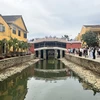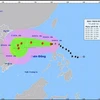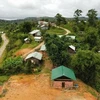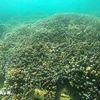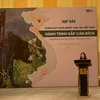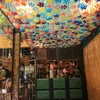Documents on the Cham Islands and Ca Mau Cape have been submitted to the United Nations Educational, Scientific and Cultural Organisation (UNESCO) for approval as global biosphere reserves.
The two spots have been officially nominated for biosphere reserve status by UNESCO’s Vietnam Committee.
The nomination will be part of the 21st session of the International Coordination Council of Man and the Biosphere Programme, to take place on the Republic of Korea’s Island of Jeju from May 25-29.
According to the UNESCO Vietnam Committee, the two sites are likely to be added to the UNESCO’s World Network of Biosphere Reserves as conservation areas that focus on sustainable development as well as environmental protection.
Truong Van Bay, vice chairman of Hoi An and a member attending the session, said the recognition would enhance the appeal of nearby Hoi An, an historic town that is a World Heritage site.
The Cham Islands consist of eight small islands and are about 20 km offshore from Hoi An town in Quang Nam province.
In the seabed of the archipelago there are 135 species of coral, including six species that were first recognised in Vietnam, and nearly 950 other marine species, including many endangered species on the Vietnam Red Book list.
The southern point of Vietnam in southern Ca Mau province is well-known for its bird sanctuaries and is home to the cajeput and mangrove ecosystems.
Vietnam currently has six UNESCO-recognised biosphere reserves, including Can Gio Mangrove, Cat Ba Island, Cat Tien National Park, Kien Giang Biosphere Reserve, Song Hong (Red River) Delta Biosphere Reserve and the Western Nghe An Biosphere Reserve./.










